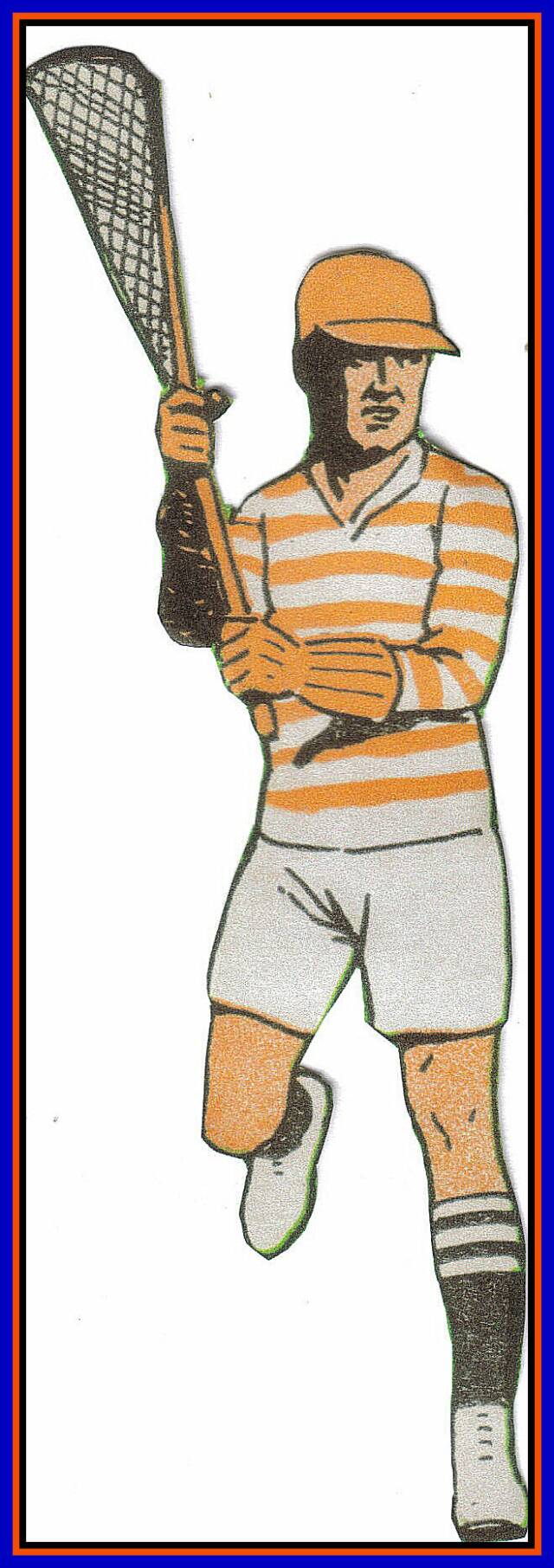





Lally's Ladies College Special: This stick dates to about 1930. Lally's recognized the opportunity that faced them in the late 1920's and early 1930's when women's lacrosse began to expload both in North America as well as England. They produced a lighter than usual stick which also appeared to be a bit narrower in the head.
(above)
Old School LAX Freak


Copyright 2009 Old School LAX Freak.com
Lally's Box Special: The In 1933, we begin to see models of equipment produced specifically for the newly introduced sport of Box Lacrosse. Spalding was one of the first sporting goods companies to embrace the new sport by distributing a line of sticks made specifically for this game by Lally. The stick to the left is one that was made by Lally's around 1933 and is one of the heaviest and well crafted wooden sticks ever made. (left)
Sponsored Links
Lally's Box Special
MORE UPDATES COMING CHECK BACK SOON
More Links
There was an article published in 1965 that warned of the dwindling supply "concentrated growth hickory". It was thought that a tree had to be a specific age and size or else the wood would not bend properly - which resulted in many breaks during the production process. Only the trunk of the tree would yield the best wood that was suitable for a lacrosse stick and to that end - only about 8 sticks could be crafted from one trunk. Mass quantities of such prime wood was so scarce the the Chisholm manufacturing facility began to advertise in distant newspapers for the wood that they would need. It was only 3-5 years later that the folks that would eventually form STX would develop and mass produce the composite lacrosse head - effectively ushering out an era that last several hundred years of North American Indian craftsmanship. Only a handful of skilled craftsman continue the traditional 1 piece sticks process such as those made by Patterson Lacrosse as well as the Mohawk Lacrosse Manufacturing company.
Lally Lacrosse Sticks had been prominently featured and advertised for sale in Spalding & Bros sporting equipment catalogs beginning in the late 1890's through the 1930's. Some of the early sticks were given model names that were comprised of simply either a number or a letter. In 1908, Lally's made at least 8 separate and distinct models and gave their top selling model the name of "Extra Special No. 0". THe catalog provided a very detailed description of this model as can be seen below.
Other model names that appear within the 1908 catalog are the Extra Special Goal No. 0, Special No. C, XXX No S, No 1R, Clock Cord No 20, Men's Single Strung Lacrosse No. '30, Youths' Special No. 40, Youths' Special No. 50, and Boys' No. 60.
Lally's Boys Lacrosse Stick: This stick was hand crafted specifically for the young child - most likely for kids under 10 years old. It is very small and light weight. It was smallest model they made (next size was the Youth). The head was small enough to only require 3 leathers running down from the scoop to the handle. circa 1915



